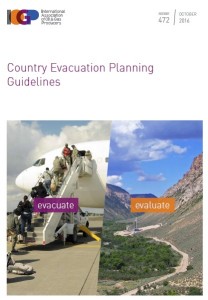Planning for Mass Evacuations
A wave of mass evacuations of foreign workers from Iraq is a timely reminder of the importance of having pre-arranged evacuation arrangements in place for companies operating in the less stable of overseas locations.
Similar evacuations have occurred in a range of other countries in recent years, particularly in the Middle East and North Africa, after political instability, civil unrest, terrorist attacks and armed conflict. Similar evacuations may also be necessary after major natural disasters.
It is essential these preparations involve the right security, safety and logistics expertise in order to consider all the potential obstacles and risks.
UPDATE 12 December 2016: The Security Committee of the International Oil and Gas Producers Association (IOGP) has published ‘Country Evacuation Planning Guidelines’ (IOGP report, No. 472).
They say:
The trigger for evacuation could be due to a gradual deterioration in conditions. This allows for companies to conduct a gradual departure. A sudden deterioration, however, might mean that people might have to remain where they are while the situation is assessed and then respond accordingly.
The report includes sections on “operation concepts, threat levels, crisis command centres, communications, training and briefing, reception arrangements and post-crisis reviews”.


Recent Comments